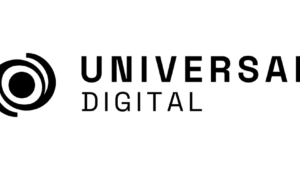The Middle East conveyor belt market is projected to register a healthy CAGR of 4.3% in terms of value during the forecast period (2016–2026). This is mainly attributed to various factors, regarding which FMI offers detailed insights in its report.
Conveyor belts are more often than not employed for wearing items from one point to any other. The fabric to be transported is placed at the belt and is carried to the cease point at the belt. The 2 primary industrial training of belt conveyors are preferred material managing and bulk cloth handling. Preferred cloth dealing is those used to move containers alongside an internal manufacturing facility whilst bulk material dealing we used to move massive volumes of sources and agricultural materials including grain, salt, coal, ore, and sand.
Growth of the Middle East conveyor belt marketplace is stimulated by using a range of factors, on the whole, speedy infrastructural development sports main to increasing wide variety of creative websites, rising adoption of automated production and cloth handling structures via various industries within the area and technological development of substances utilized in conveyor structures.
Key tendencies found in the middle East conveyor belt market are the attention of gamers on catering to on-site preservation of conveyer belts, reduction of power fees using the use of energy-green belts, and OEMs partnering with local vendors to beautify their distribution network inside the middle East.
Based on product type, the Middle East conveyor belt market has been segmented into metal-reinforced rubber conveyor belts, fabric-reinforced rubber conveyor belts, and plastic conveyor belts. Metal-reinforced rubber conveyor belt segment has been estimated to account for a 27.3% value share of the market in 2015 and is expected to register a CAGR of 4.6% over the forecast period.
By cover type, the Middle East conveyor belt market has been segmented into conductive conveyor belts, abrasion-resistant conveyor belts, heat- and flame-resistant, and oil-resistant conveyor belts. The conductive conveyor belt segment has been estimated to account for a 13.5% value share in 2015 and is expected to register a CAGR of 5.7% over the forecast period.
Based on application, the Middle East conveyor belts market is segmented into mining, food production industry, commercial, construction industry, electricity generating stations, automotive industry, chemical & fertilizers, and packaging industry; among these, the mining segment has been estimated to account for a value share of 22.9% in 2015.
By weight, the Middle East conveyors belts market is segmented into a lightweight, medium-weight, and heavyweight; among these, the medium-weight segment has been estimated to account for a value share of 49% in 2015, which is projected to increase to 49.5% by 2026. In the Middle East conveyor belt market, the lightweight segment is projected to exhibit the highest CAGR of 5.0% over the forecast period.
Key Players
Key players in the Middle East conveyor belt market include Al Kuwaiti Industrial Solutions, Arabian Universal, Bridgestone Corporation, ContiTech AG (Continental AG), Derby Conveyor Belts Industry and Trade Inc., FaBa Commercial Services, Fenner Dunlop Conveyor Belting, Kale Conveyor, Phoenix Conveyor Belts Systems GmbH, Schieffer Magam Industries Ltd., Semperit AG Holding, Ziligen A.S., Major participants are focusing on collaborations and partnerships with service providers to enter into new markets. These key players are also focusing on expanding their offerings and providing end-to-end solutions, which include conveyor belt manufacturing, service, and maintenance.



































